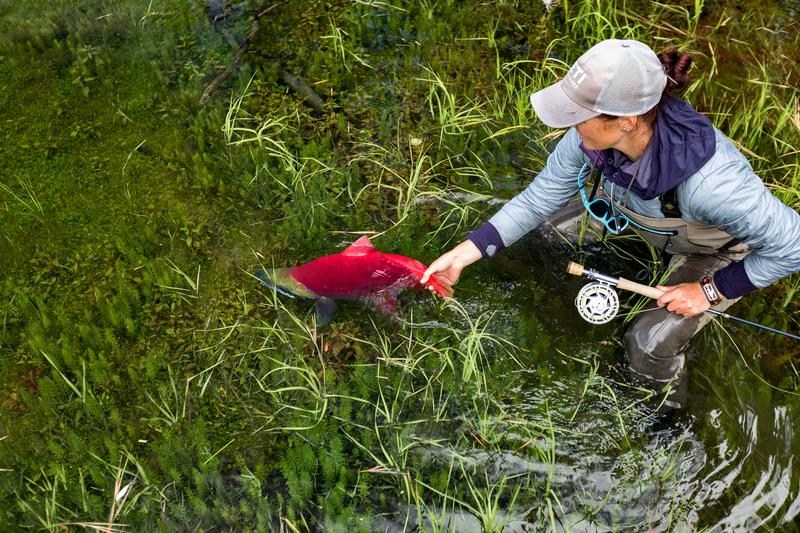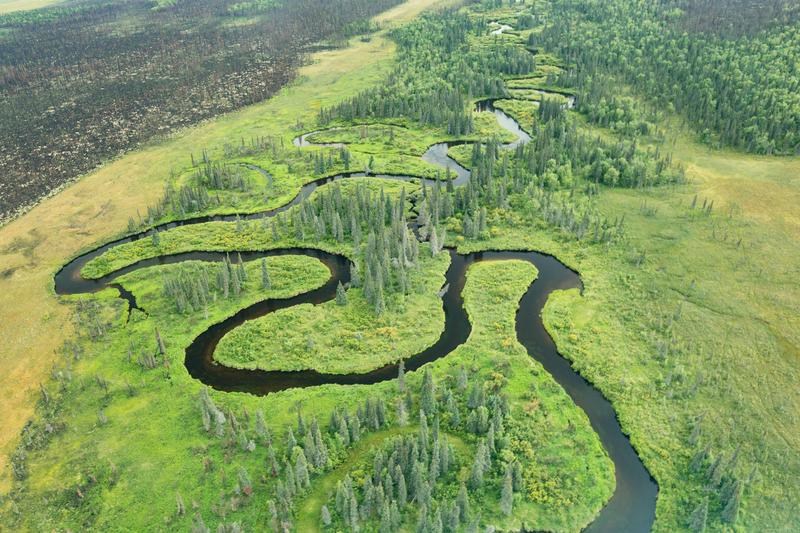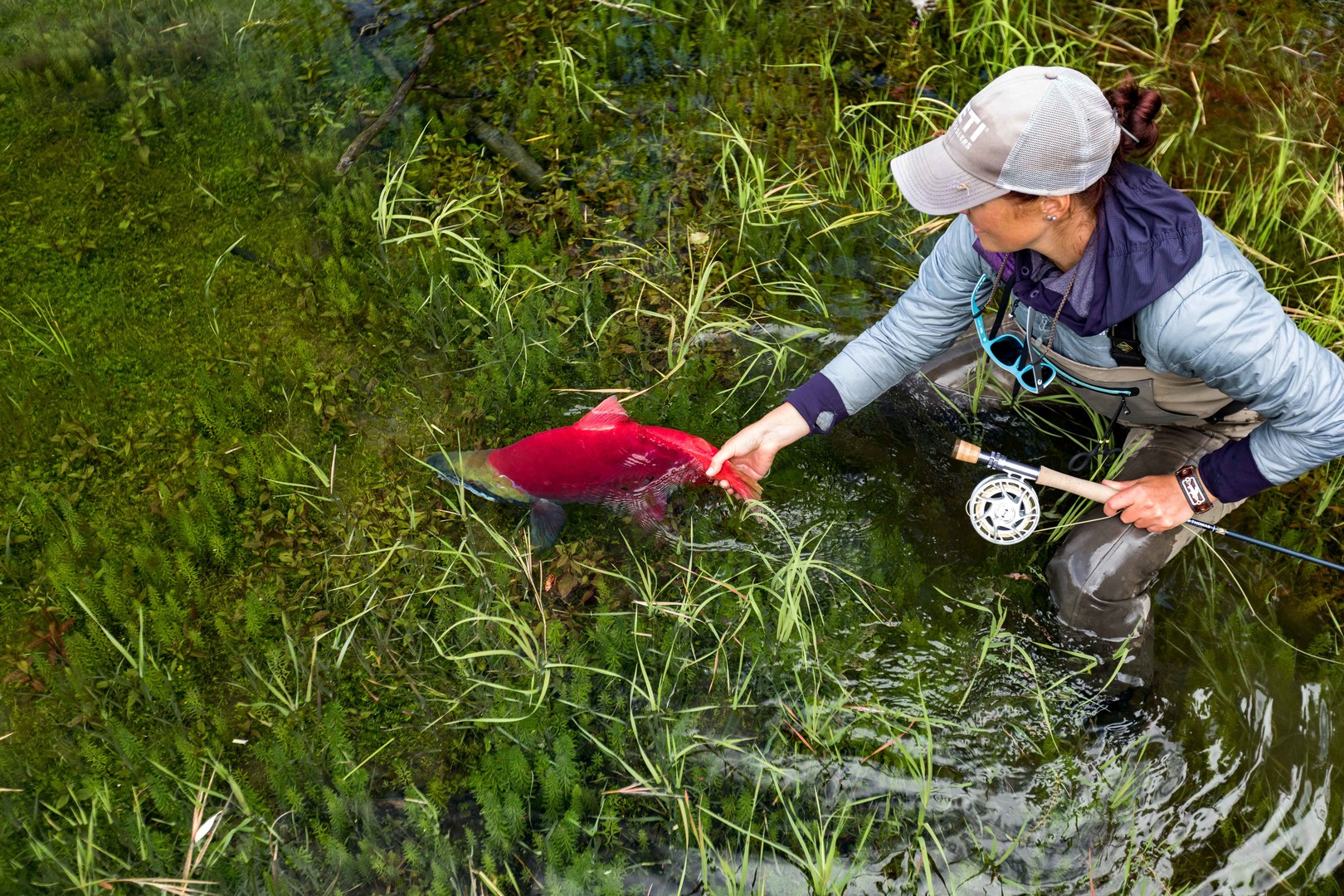You are here
It was a brisk, cool morning with dew sparkling on the blades of grass lining the bank of the Nushagak River. I was the first to be awake, and camp was quiet with only the sounds of birds and the crackle of the campfire at my feet. I sipped my coffee and peered out over this special stretch of river. I’ve spent almost every summer of my life on this river at my family’s fishing camp. Every time I come back, it’s like I’m coming home.
It was late July, and the annual salmon run was nearing its peak. Just like clockwork, these fish return every year to spawn in the same river where they were born. As I sat by the river, a group of five or six sockeye pushed their way upriver moving in unison, creating a v-like wake behind them. I watched in silence, awe and appreciation. The salmon were here.

A few weeks later, the salmon spawn was in its later stages, and it wasn’t long before I noticed the year’s first dead salmon float by, its gills still pumping what little oxygen it could to its deteriorating and almost lifeless body. “Poor thing,” said Bill, who walked up behind me. He was a fly fishing client who was staying at camp for the week. “Certainly a dismal way to die. That seems like such a waste,” he added as he took a seat across from me.
“Yeah, it isn’t easy to watch something wither away and die so slowly.” I said. “But believe it or not, this is in no way a waste.” I stood up and walked over to the bank and leaned over the edge to peer down into the water.
“If you look to the edge of the water here, you’ll see hundreds of minnows. Those minnows are called smolts--baby salmon.”
“No kidding?” he exclaimed as he walked over to where I was standing to look into the water.
“Yes. What may seem like a waste is actually a gift. As the adult salmon die, these smolts will feed on their bodies, receiving nutrients they need to grow strong in order to make the long journey back to the ocean. Without these dying fish, the smolts would never survive. It’s a sacrifice that will ensure the prosperity of the next generation.”
He nodded with an expression of wonder. We talked for the next hour about salmon and the impacts they have on the ecosystem. How every aspect of life depends on their yearly return.
“So if these salmon were to one day not come back, your parents would no longer have a camp here?” he asked.
“No,” I tell him. “Because when the salmon are gone, so are the birds, the eagles, the mammals, the bugs, the trout, grayling and char and even the trees and vegetation. That’s how important these salmon are to the entire ecosystem. If the salmon one day disappeared, Alaska and the world would lose a huge natural resource that wouldn’t be replaceable.”
Conversations like this take place every time a new group of anglers comes to camp. And I never tire of having these conversations because they always result in one more person who truly understands the value of wild salmon. And perhaps it’s one more person who will help us protect them in the face of constant pressure from proposed development projects like the Pebble Mine.

I’m having more conversations than ever this summer and fall, because wild Alaskan salmon need every supporter we can rally, both in-state and in the Lower 48, to step up to protect these creatures for the future. We are gearing up for election day on November 6, 2018, when Alaskans will have the opportunity to vote on a unique and proactive ballot measure to better protect wild salmon rivers.
Driven by the Stand for Salmon campaign, the measure will update state law to balance growth and development with thriving fisheries. As it stands, there are no specific rules that limit the amount of damage to fish habitat during development projects in Alaska. If passed, the initiative would give Alaskans the tools to say no to mega projects like Pebble Mine and ensure the state remains rich in salmon for generations to come.
But the ballot faces strong opposition from international mining companies. These companies gave over $1.6 million in just one week this June to support a massive advertising campaign with truth-bending messages against this initiative. While the opposition pumps millions of dollars into fighting the campaign, thousands of Alaskans are rallying to Stand for Salmon. The initiative is a grassroots powerhouse with support from over 300 Alaskan businesses, commercial fishing vessels and Alaska Native leaders. While the opposition is funded by foreign mining and gas company executives, the Stand for Salmon campaign is run by Alaskans for Alaskans.
If the rocks surrounding my family’s Alaskan campfire could talk, they’d have many stories to tell (good and bad), but they’d also tell stories about the conversations surrounding the salmon return and what they mean to the watershed. That fire has not only been a source of warmth and comfort, it is a place where people from all walks of life bear witness to one of nature’s most profound events taking place just a few feet away. It’s a place where we can connect with salmon and wilderness. It’s a place where people ask the question, “Why would anyone put this at risk?”
Alaska’s wild salmon need our help. You can take a Stand for Salmon today by signing up to receive email updates about the campaign, by donating to support on-the-ground organizing, and by sharing the Stand for Salmon campaign with friends and family who care about Alaska’s wild salmon.





Comments
Sign In and share them.